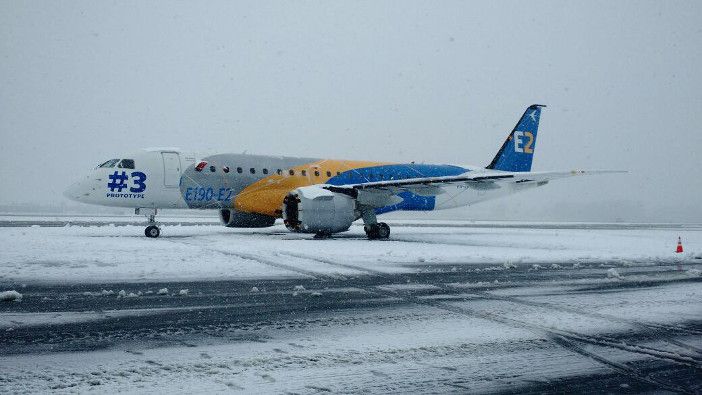Researchers from the University of Illinois Chicago in the USA have developed a coating for aircraft and ground equipment to serve as a longer lasting alternative to conventional deicers.
The gel coatings are a family of phase change material-based formulations which can tailor solid foulant adhesion on functional surfaces, ranging from ice to bacteria, irrespective of their inherent material structure and chemistry.
A team at the University of Illinois Chicago developed the materials by regulating how chemicals leach out of the material and creating a lubricating surface layer that is both slippery and non-freezing in nature.
Sushant Anand, UIC assistant professor of mechanical engineering at UIC said, “We questioned the lifetime of the cryoprotectants and looked at new ways to increase their effectivity.
“Glycols dissolve very fast in the water and get washed away before the plane takes off. It’s a serious problem that costs hundreds of millions of dollars – most of which ends up in the drain.
“We thought, why not make alternatives that can last longer while being more biofriendly. And that is what we ended up doing.”
The researchers have developed a family of more than 80 anti-freezing coatings – polymeric solutions, emulsions, creams and gels. The formulations can be easily applied to aluminum, steel, copper, glass, plastic or any industrial surface without preconditioning or expensive surface treatments.
Their work is reported in an Advanced Materials article titled “A family of frost-resistant and icephobic coatings.”
Rukmava Chatterjee, a UIC Ph.D. student and researcher on the project said, “Our coatings are an all-in-one package which can delay formation of frost for extended hours and simultaneously cause any ice formed on its surface to easily shed off by a gentle breeze or simple substrate tilting,” Chatterjee said.
The anti-freezing gels could also benefit other industries and are also transparent, which is critical for applications like traffic signals, runway lights that assist pilots during landings, automotive windshields or building windows.
“Imagine coating your smartwatch with our gel that can inhibit ice accretion in the chilly negatives while simultaneously preventing any bacterial contamination,” Chatterjee said.
“Since our anti-icing sprays are bio-friendly and anti-bacterial, we even think there is a potential to use them in agriculture to prevent crops from being ruined by severe frost,” Anand said. “But that is a pipe dream, and we need to do more studies to see if there will be any long-term adverse effect on the plants.”
A worldwide patent application titled “Compositions and Methods for Inhibiting Ice Formation on Surfaces” has been filed by UIC’s Office of Technology Management.
“There is great potential in these materials for many applications, and I think the day when commercial versions of our materials come out just got closer,” Anand said.
Anand Research Group members Hassan Bararnia and Umesh Chaudhuri collaborated with Chatterjee on the experiments.
Original written by David Staudacher at University of Illinois Chicago.





